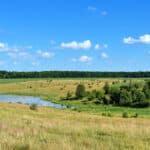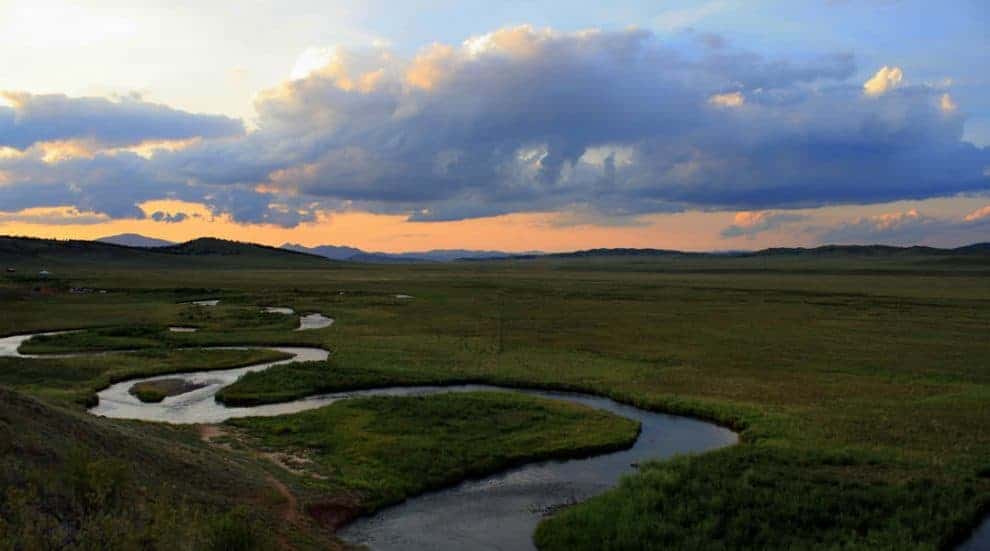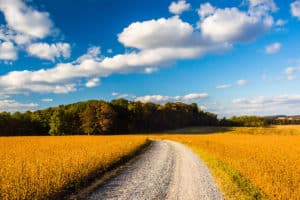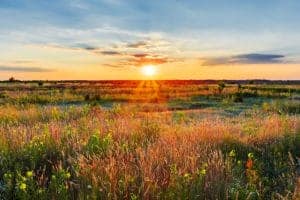Despite the fact that conservation easements have been widely used as an effective land protection tool for decades, I still encounter a surprisingly large number of landowners and land buyers who are misinformed about the most basic aspects of the conservation easement process. Most of these people are smart, sophisticated, and highly knowledgeable about a wide range of land-related issues, but for some reason, conservation easements are a constant source of confusion.
Below, I list out a few of the most common misinformed objections that I hear time and time again, and as you’ll see, all of these objections are based on an incomplete understanding of exactly how conservation easements work. But first, to make sure everyone is on the same page, let’s define exactly what a conservation easement is. The Land Trust Alliance defines a conservation easement as “a voluntary legal agreement between a landowner and a land trust or government agency that permanently limits uses of the land in order to protect its conservation values. Landowners retain many of their rights, including the right to own and use the land, sell it and pass it on to their heirs.”
Now, on to a few of the more common objections that I regularly hear, followed by my humble attempt to set the record straight. Usually, all of these objections begin with some version of “I’m not interested in conservation easements because…”
“…I want my children to be able to build houses on the property.” Conservation easements are completely customizable depending on the landowner’s goals and plans for the property. The landowner decides how much potential development he is comfortable with and any other future needs (such as relatives’ use of the land), then he works with a land trust to draft an appropriate easement to meet his family’s goals. The scope of future development is the landowner’s choice — if he wants to designate building envelopes for future homes for his children, that’s allowable. If he wants to disallow construction of any kind, that’s allowable too. Whatever he chooses, it’s up to the landowner and land trust to work together to draft an easement that benefits all stakeholders.
“…I don’t want to allow public access on to my land.” Landowners are not required to allow public access as part of an easement. As discussed above, an easement is completely customizable depending on the needs of the landowner. While there are certain cases in which landowners choose to allow public access on to their property as a condition of an easement, these cases are the exception rather than the rule. When conserving a property, the landowner is forgoing future development rights on private property, not converting their land into a State Park for public enjoyment!
“…I don’t want the government involved with my land.” While there are cases in which government entities hold conservation easements, most easements are held by non-profit land trusts. These land trusts are classified as 501(c)(3) organizations, just like the Red Cross, American Cancer Society, or Boy Scouts of America. Another common term for these types of organizations is “NGOs,” or Non-Governmental Organizations. By working with a land trust, you are no more allowing the government into your personal affairs than if you choose to donate $1,000 to the Red Cross. Yes, the government and the IRS can scrutinize any tax benefits gained by donations to a non-profit, but that is the case with all charitable donations, not just donations to land conservation groups.
“…I don’t want the land trust constantly visiting my property.” As a condition of the conservation easement, land trusts must physically inspect the property to ensure that the landowner is upholding the terms of the easement. Best practices stipulate that monitoring must occur at least once per year, so landowners can expect an annual visit from a land trust representative. Under most circumstances, anything more than one visit per year would be excessive and a waste of land trust resources. A landowner considering an easement should establish all expectations up front, particularly when it comes to the frequency and details of monitoring visits. In my experience, reputable land trusts give plenty of notice and respect landowners’ wishes regarding the timing of monitoring visits, so this should not be an issue.
“…I need to keep my land in agricultural production.” Some of the most successful land trusts in the country specialize in working with farmers and ranchers to keep their land agriculturally productive, while also protecting it from irresponsible development. Again, conservation easements can be customized according to the landowner’s goals, so if a landowner wants to continue farming or ranching, then that can be arranged as part of the easement. An excellent example of an agriculture-centric land trust is the Colorado Cattlemen’s Agricultural Land Trust, which focuses exclusively on productive ranches and has protected over 450,000 acres of working land throughout Colorado. [On a personal note, I strongly believe that in the West, keeping ranches in production while also protecting against development is the most effective land conservation strategy – more on that here.]
“…I don’t have enough income to benefit from donating an easement.” For those landowners whose income is not high enough to justify the tax benefits, there are other options. If a parcel of land is of high enough conservation importance, land trusts will sometimes pay landowners for conservation easements. Using a combination of private donations and grants, land trusts can buy the development rights from the landowner, putting cash in the landowner’s pocket (versus tax credits and/or deductions that could go unused). Easement purchases are more rare than donations and the process can take longer, but they are a viable option for many important properties. Also, in some states including Colorado, conservation tax credits can be sold for cash, giving the landowner a way to monetize his donation while providing tax relief to high-income third parties who are willing to buy the credits at a slight discount.
—
Conservation easements are complex documents with innumerable moving parts, and it’s important that landowners fully understand all of the legal implications and risks prior to moving forward with the process. For buyers interested in purchasing protected land, it is vitally important to investigate all details of the easement and know how it will affect the future land uses and values. Conservation easements are “in perpetuity,” so decisions related to them must be thoroughly considered, as they are about as permanent as you can get in the world of real estate.
While conservation easements are one of the most effective tools currently available for protecting land, they are not appropriate for all situations. My goal here is not to convince you that conservation easements are the perfect solution for every farm, ranch, or property in the country — I strongly disagree with that idea. A conservation easement is a very specific tool with a very specific purpose that is appropriate in certain cases, for certain landowners. It’s up to each landowner to seek unbiased, experienced guidance when considering the pros and cons of protecting his or her property.
As for the specific legal and tax implications, I’m not a lawyer or accountant and don’t play one on the internet, so be sure to seek appropriate counsel when sorting through the minutia of conservation easements. If you’re in the Rocky Mountain West, I’ve got a long list of talented attorneys and accountants that I’m happy to recommend.
Written by (and photo credit to) Ed Roberson, a Colorado-based ranch broker and land conservation consultant who has worked extensively throughout the Rocky Mountain West. To learn more, visit his blog www.mountainandprairie.com.
This content may not be used or reproduced in any manner whatsoever, in part or in whole, without written permission of LANDTHINK. Use of this content without permission is a violation of federal copyright law. The articles, posts, comments, opinions and information provided by LANDTHINK are for informational and research purposes only and DOES NOT substitute or coincide with the advice of an attorney, accountant, real estate broker or any other licensed real estate professional. LANDTHINK strongly advises visitors and readers to seek their own professional guidance and advice related to buying, investing in or selling real estate.










Ed, What would happen to a conservation easement for a parcel of land (in Colorado for instance) that transferred ownership through the tax lien process? How would the previous owner and the new owner be affected by that easement? Thanks, BJC